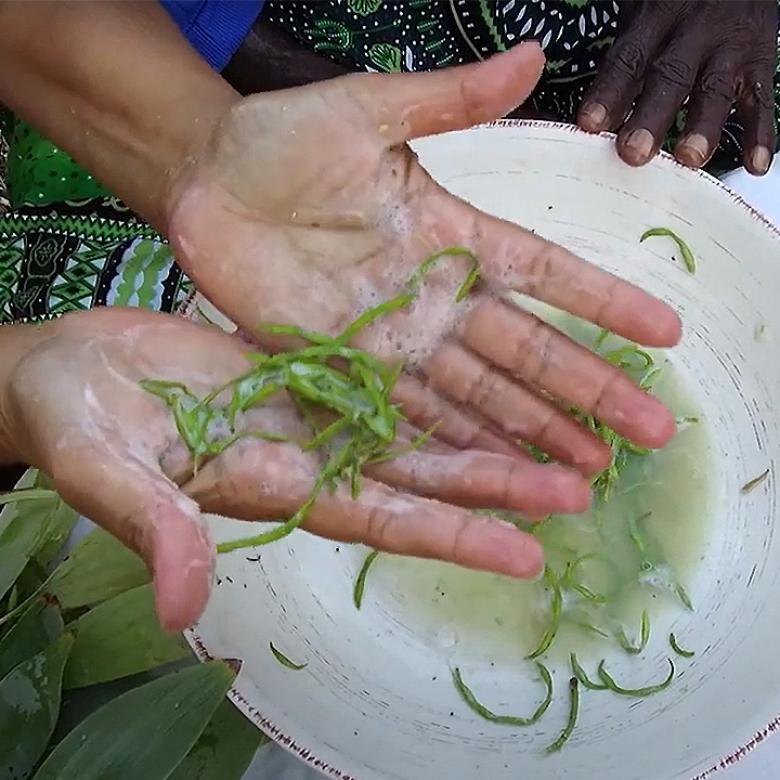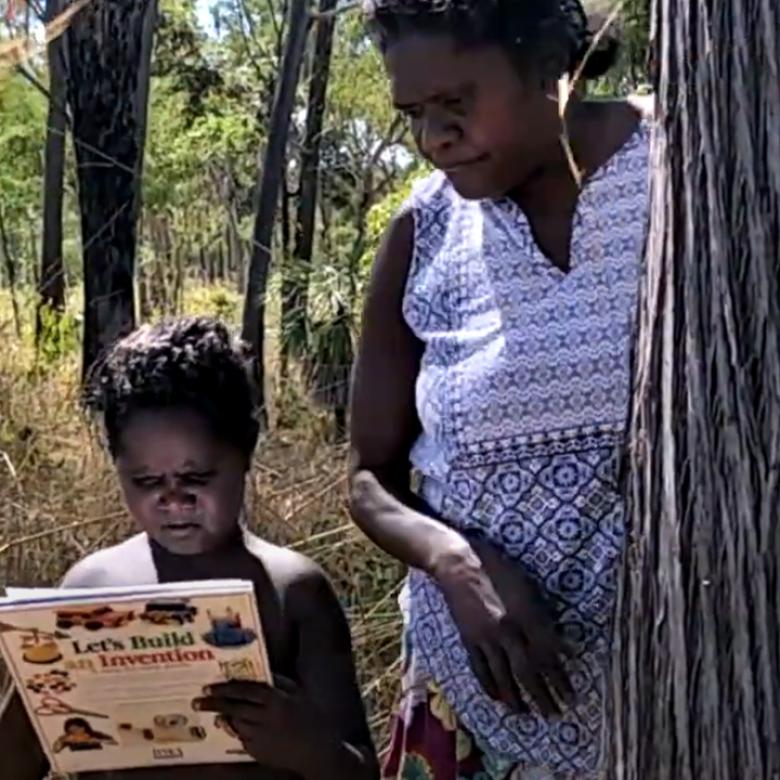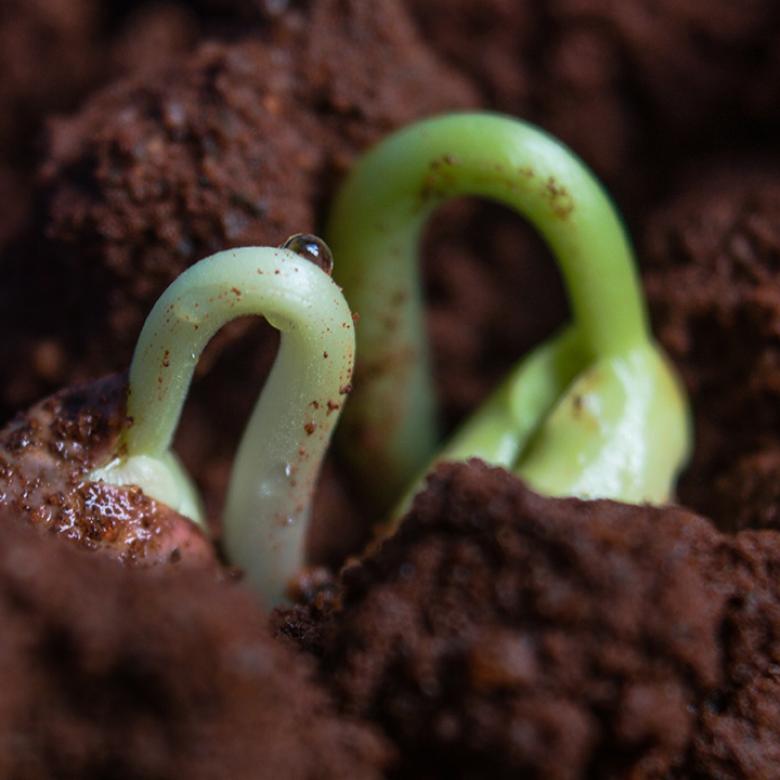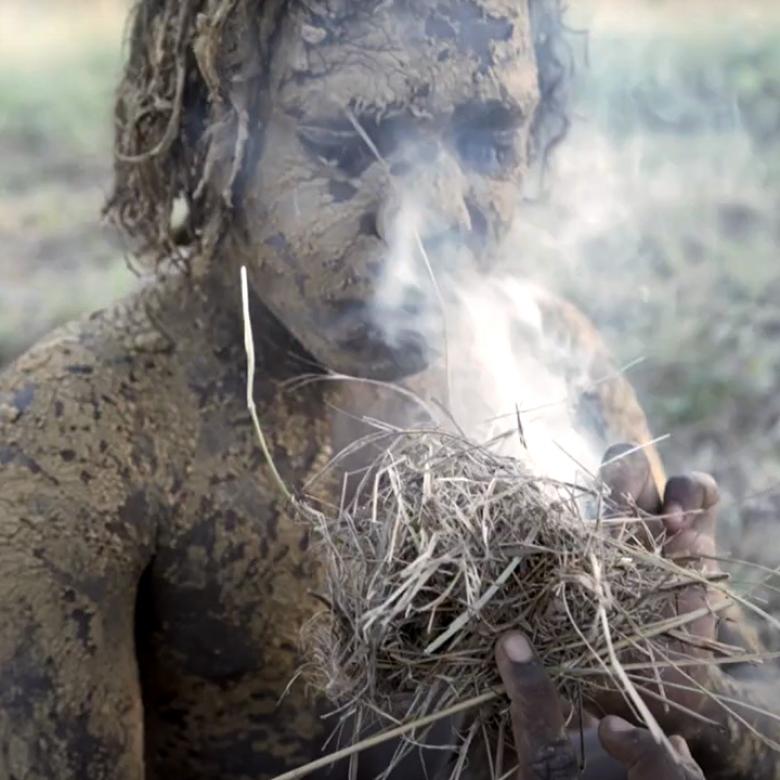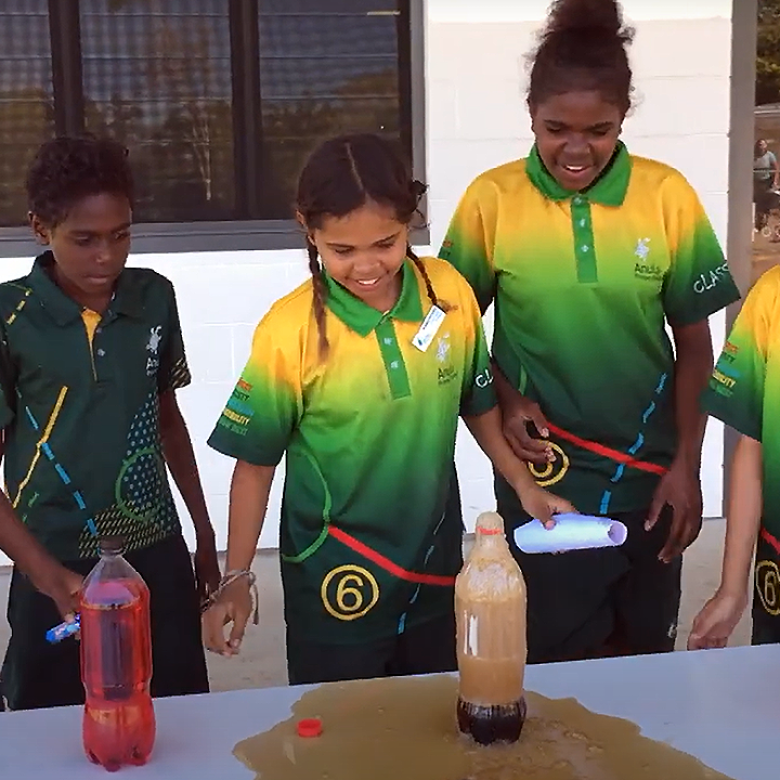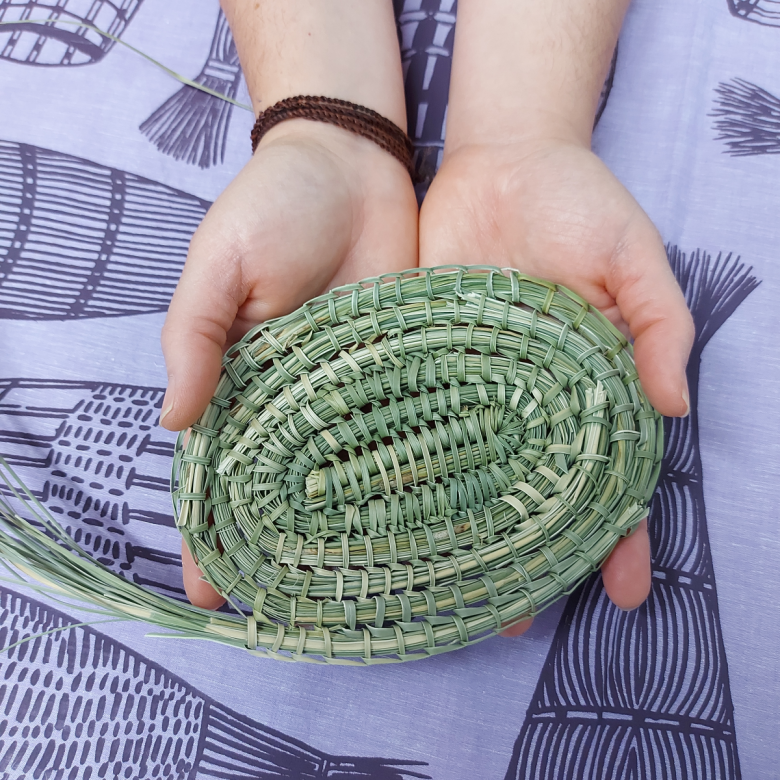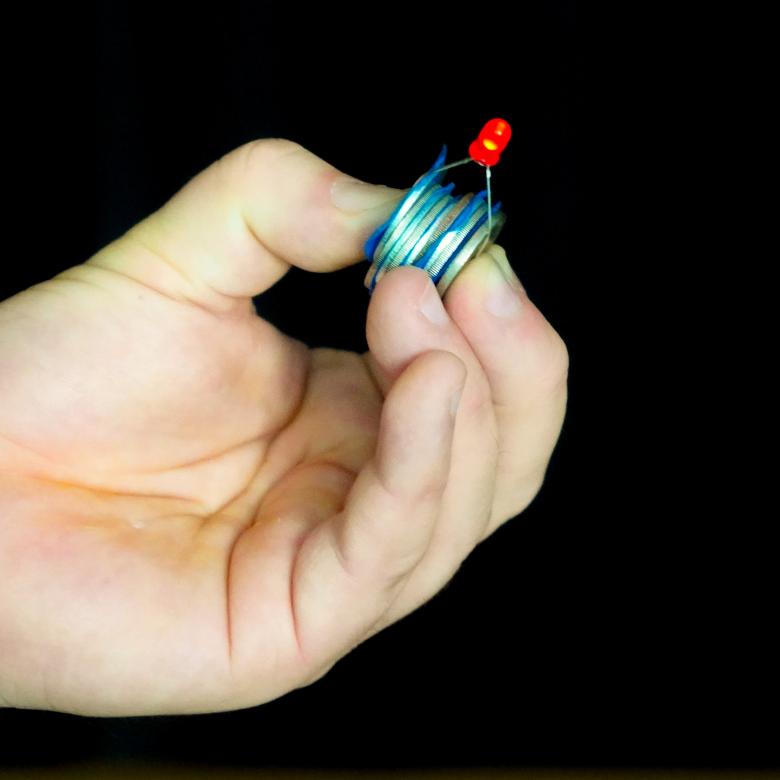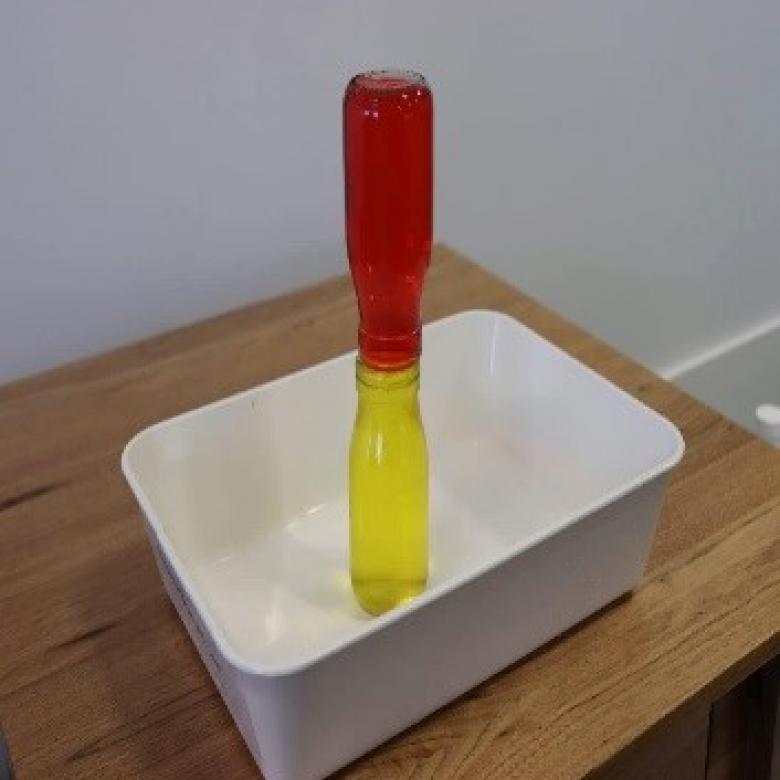Elkerte bush soap
Join Shirleen McLaughlin and Amy Ngamperle, two Kaytetye women in Alice Springs to make a soapy lather using the green seedpods of the elkerte tree (wattle tree).
[Image appears of text on a black screen: The following video made by the University of Sydney was prepared for Questacon’s Science in First Language Project as part of the International Year of Indigenous Languages 2019]
[Music plays and the image changes to show text on the screen: Science In First Language]
[Images flash through of various indigenous people and children in various traditional activities, dances, talking, experiments, and school children playing basketball]
[Image changes to show text: Science in First Language]
[Image changes to show a black screen showing text: Bush Soap, Making soap from the “elkerte” wattle tree, Spoken in Kaytetye]
[Image changes to show a view looking up at an Elkerte wattle tree]
Shirleen McLaughlin: Hi, my name is Shirleen. I’m a Kaytetye Aranda woman from Central Australia. I’m here in Alice Springs with my Kaytetye mother-in-law Amy. She is going to show us how to make a soapy lather by using the green seedpods of the elkerte tree.
[Music plays, and the image changes to show Amy talking to the camera while Shirleen listens, and text appears: Amy Ngamperle]
Amy Ngamperle: This is how we made soap suds in the olden days with these seed pods with water.
[Image shows Shirleen pouring water over the seed pods as Amy rubs them above a bowl, and text appears: Shirleen McLaughlin]
We would rub it like this and wash our hair with it.
[Image continues to show Shirleen adding water as Amy rubs the seed pods between her hands to create a lather]
It’s like soap we would put on our head when I was a young girl. Sickleleaf wattle (Acacia colei).
[Image shows Shirleen adding more water]
Shirleen McLaughlin: Beautiful.
[Camera zooms in on Amy’s hands with the lather above the bowl]
Amy Ngamperle: You do it like this, like with soap.
[Image shows Shirleen’s hands creating a lather above the bowl while Amy watches]
Shirleen McLaughlin: Yes. I love it.
[Camera zooms out to show Amy talking to the camera while Shirleen lathers her hands with the wattle seed pods]
Amy Ngamperle: That’s the way!
[Image changes to show Shirleen talking to the camera while Amy listens, and then Shirleen bends down and washes her hands in the soapy bowl]
Shirleen McLaughlin: Eating Kangaroo tail, get rid of the smell of the kangaroo tail and all the dirt will just come off easy in a good old wash.
[Image shows Amy and Shirleen talking together]
Amy Ngamperle: Mmm, yeah.
Shirleen McLaughlin: Yeah. And that’s how it’s done.
Amy Ngamperle: Yeah.
[Camera zooms in on the bowl of wattle seed lather]
Shirleen McLaughlin: Yeah, and that’s how it’s done. Me and Amy. Thank you, Amy, for showing me, teaching me, yeah.
[Image shows Shirleen sitting next to Amy, and Amy talking to the camera]
Amy Ngamperle: That’s the sickle leafed wattle.
[Image changes to show a close view of Shirleen rubbing the wattle seed pods together in her hands and creating a lather]
Shirleen McLaughlin: You rub the seedpods together with water, it lathers up just like soap. This is because it has a chemical compound called saponin. So, remember science isn’t just in the classroom, it’s out bush in nature as well.
[Image changes to show Amy talking to the camera and then Shirleen talking to the camera one after the other]
Amy Ngamperle: That’s all, finished.
Shirleen: That’s all finished.
[Music plays and the image changes to show text on a black screen: Starring Shirleen McLaughlin & Kaytetye speaker Amy Ngamperle, Camera Ben Deacon, Editing Jonathan Barnes, Music Jonathan Barnes, Produced and Directed by Myfany Turpin 2019]
[Image shows the Australian Government Department of Industry Innovation and Science Coat of Arms, and Questacon logo]
This information is cultural material provided by First Nations people and remains their Indigenous Cultural and Intellectual Property (ICIP). This material may be removed or amended as needed.

